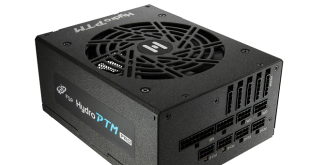To test all CPU coolers, we devised an easily repeatable test with no variables other than the coolers themselves. This ensures that figures from every cooler we test are comparable with each other.
Test rig
Using an open-air test bench, we deploy an Intel Core i7-4790K plugged into a Gigabyte Z97X-SOC Force motherboard. Alongside this is 16GB of 2400MHz Corsair Vengeance DDR3, as well as a120GB OCZ Trion 150 SSD. Powering everything is a Corsair RM750x PSU.

The test process
Testing coolers involves taking a total of 4 temperature readings per cooler. First, we measure the idle temperature of the i7-4790K at stock speeds (turbo boost disabled), before measuring its temperature under load at stock speeds. Next, we overclock the CPU to 4.5GHz using a 1.3 Vcore, ensuring greater heat output. In its overclocked state we then measure the idle and load temperatures of the CPU again.
To ward off potential comments or questions, we know 4.5GHz using a 1.3 Vcore is not the ‘best’ overclock – this particular CPU could reach that frequency at closer to 1.25 on the Vcore, which is more efficient. That is not the point, however. We are trying to stress the coolers to see how they deal with excess heat … hence the higher than necessary Vcore.
Where possible, each cooler’s fans are plugged directly into the motherboard using the CPU_Fan or CPU_Opt headers. Some AIOs, however, ship with their own fan controllers or PWM hubs. If we are unable to plug the fans directly into the motherboard, it is specified in the performance section of the review.
An idle reading comes from leaving Windows on the desktop for 15 minutes. A load reading comes from running Prime95’s (version 26.6) Small FFTs test for 15 minutes – enough time for temperatures to plateau.
Noise output
Unfortunately I am unable to properly measure the sound output of AIO coolers using a digital sound meter. This is because I am based alongside a busy road (with high ambient noise levels). Using a sound meter is, as such, not possible as there are variables out of my control. However, I will try my best to subjectively describe the noise output in a helpful manner.
 KitGuru KitGuru.net – Tech News | Hardware News | Hardware Reviews | IOS | Mobile | Gaming | Graphics Cards
KitGuru KitGuru.net – Tech News | Hardware News | Hardware Reviews | IOS | Mobile | Gaming | Graphics Cards



I bought an Eisbear Solo to build a custom loop for my son’s pc, adding a 360 Alphacool rad and his watercooled videocard. It works, however I question the pumps power in getting fluid around an expanded loop. I don’t think that it is powerful enough to push water effectively through multiple waterbloocks and rads. Not to be used on an overclocked system if adding extra rads and blocks. Installing this block was torment, it is not really user friendly. I could have done with an extra hand and bleeding the system was painful. Having said all of this, in my son’s loop Intel Core i5 and 980Ti (both stock) and a single slim 360 rad performance has been decent. The pump is quiet and has been able to keep the 980ti and Core i5 cooler than traditional aircooling.
if I ever go with water cooling, I will be going with this system
not to post again on the same article, looks like the first AM4 product is now coming to market https://www.techpowerup.com/reviews/MSI/Core_Frozr_L/